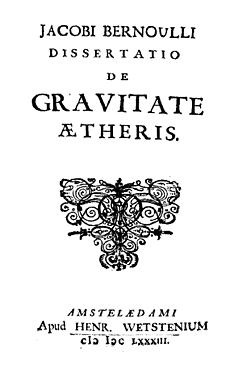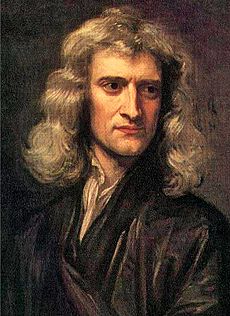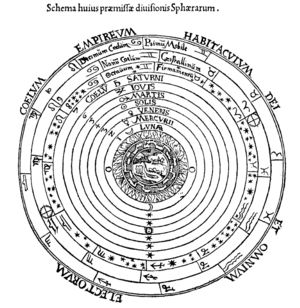Aether (classical element) facts for kids
In ancient times and the Middle Ages, people believed in a special substance called aether. It was also known as the fifth element or quintessence. This mysterious material was thought to fill the space far beyond Earth, where the stars and planets are.
Scientists used the idea of aether to explain how things like light and gravity worked. For example, in the late 1800s, some physicists thought aether filled all of space. They believed it was the invisible "road" that light waves traveled on, even in a vacuum (empty space). However, a famous experiment called the Michelson–Morley experiment did not find any proof of this aether. This led scientists to believe that no such luminiferous aether exists.
Contents
Mythological Origins of Aether
The word aithḗr comes from ancient Greek. It means "pure, fresh air" or "clear sky." In Greek mythology, aether was seen as the pure air that the gods breathed. It filled the heavens where they lived. This was different from the ordinary air that humans breathed on Earth.
Aether was also thought of as a god, Aether. He was often described as the son of Erebus (darkness) and Nyx (night). The word aithḗr is also linked to a Greek word meaning "to burn" or "to shine." This connection shows its bright, heavenly nature.
The Fifth Element Concept
The ancient Greek philosopher Plato mentioned aether in his writings. He called it the "most translucent kind" of air. However, Plato mostly used the idea of four classical elements: earth, water, air, and fire.
Later, Aristotle, who was Plato's student, added a new idea. He noticed that the four elements on Earth were always changing and moved in straight lines. But the heavens, with their stars and planets, seemed perfect and moved in circles. So, Aristotle introduced a "first" element for the celestial regions. This element was different from the others. It didn't get hot or cold, wet or dry. It only moved in perfect circles.
Later thinkers began to call this new element aether. They saw it as the fifth element, making the system complete. Aristotle also believed that the celestial spheres (invisible layers holding the planets and stars) were made of aether. This helped explain why planets seemed to move in perfect circles.
Medieval philosophers thought aether could have different densities. They believed planets were denser forms of aether. Some even said aether was "subtler than light."
What is Quintessence?


Quintessence is the Latin name for the fifth element. Medieval alchemists used this term. They thought it was the same pure substance that made up the heavens. Alchemists believed there was very little quintessence on Earth. This meant that events in the heavens could affect things on Earth.
The idea of quintessence became popular in medieval alchemy. It was part of a system that included the four classical elements. It also added two chemical elements: sulphur (for burning) and mercury (for metallic properties).
Medicinal alchemists tried to find and use quintessence. They thought that if someone consumed this pure, heavenly substance, it could cure illnesses. A 15th-century book, The book of Quintessence, suggested distilling alcohol seven times to create it. Over time, quintessence became linked to elixirs, medicinal alchemy, and even the famous philosopher's stone.
Aether's Legacy in Science
In the 1700s and 1800s, scientists developed "aether theories." They used the idea of aether to explain how forces like light and gravity traveled. For example, Isaac Newton used aether in some of his early ideas about gravity. However, these early modern aether theories were very different from the ancient ideas.
Today, these aether theories are not used in science. The development of special relativity by Albert Einstein showed that light and other forces do not need a medium like aether to travel. Einstein even suggested that empty space itself has physical properties. This could be seen as a new kind of "aether."
Sometimes, modern physicists still use the term "quintessence." For example, one idea for dark energy (a mysterious force making the universe expand faster) is called "quintessence." This is a nod to the old classical element. It's also sometimes called a fifth fundamental force.
Aether and Light Travel
For hundreds of years, scientists wondered how light traveled. In the 1600s and 1700s, many thought aether was the answer. Johann II Bernoulli suggested that space was filled with tiny "whirlpools" of aether. These whirlpools made the aether elastic, allowing light to travel through it.
Christiaan Huygens also developed a wave theory of light. He believed light traveled as waves through an "omnipresent, perfectly elastic medium" called aether. People thought that just as sound needs air to travel, light needed aether to travel through a vacuum.
Later, scientists discovered that light waves are transverse (like ripples on water), not longitudinal (like sound waves). Theories by Maxwell, Einstein, and de Broglie replaced Huygens' idea. These new theories did not need aether to explain light.
The Michelson–Morley experiment in the late 1800s provided strong evidence against the existence of aether. This experiment tried to detect Earth's motion through aether but found nothing. Its results greatly influenced scientists and helped lead to Einstein's theory of special relativity.
Aether and Gravity

Aether was also used in different theories to explain gravitation (gravity). In 1682, Jakob Bernoulli suggested that the hardness of objects depended on the pressure of aether.

Sir Isaac Newton also used aether in some of his early ideas about gravity. In his famous book, Philosophiæ Naturalis Principia Mathematica (the Principia, 1687), he described aether as a medium that flowed down towards Earth. He thought this "circulation" of aether caused the force of gravity.
Newton's theory suggested that aether was denser inside objects and rarer outside them. He believed that particles of denser aether were attracted back to the rare aether, creating a pull. This helped explain how gravity could act over a distance without direct contact. Newton later changed his theory to focus on forces and laws of motion. However, his early ideas about aether were a starting point for understanding gravity.
See Also
- Akasha
- Celestial spheres
- Dark matter
- Energy (esotericism)
- Etheric body
- Etheric force
- Etheric plane
- Godai (Japanese philosophy) § Void (Aether)
- Prana
- Radiant energy



